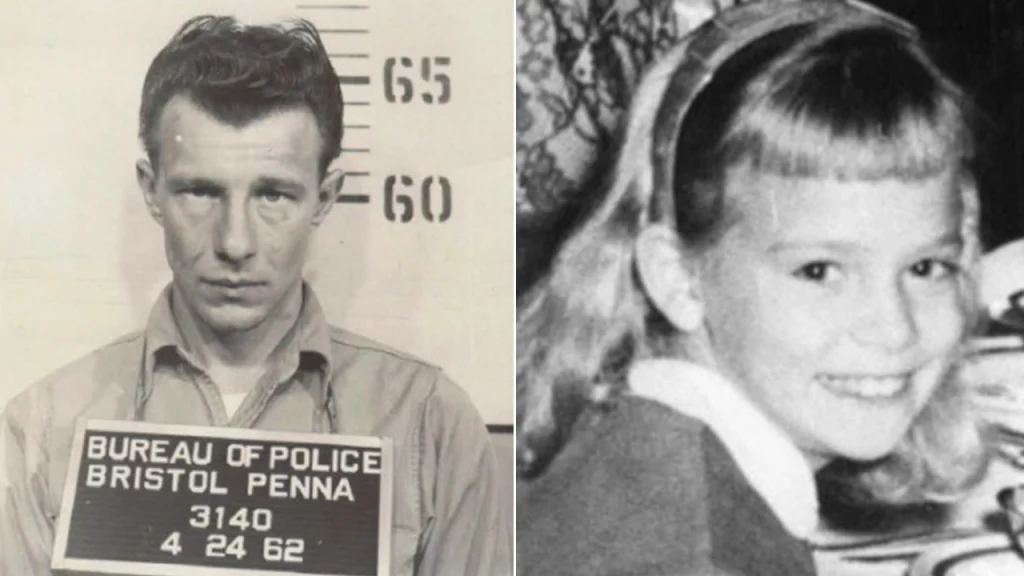Justice After Six Decades: The Solved Murder of Carol Ann Dougherty
In a remarkable resolution to one of Bucks County, Pennsylvania’s most haunting cold cases, authorities have finally identified the man responsible for the 1962 rape and murder of 9-year-old Carol Ann Dougherty. After more than 60 years of investigation, a grand jury has concluded that William Schrader—a local factory worker who lived near St. Mark’s Church in Bristol—committed the horrific crime that has tormented a community for generations. The announcement brings long-awaited closure to Carol Ann’s family, who have lived with unanswered questions for decades. Her sister, Kay Dougherty Talanca, tearfully expressed what this meant to her family: “Our family lived without answers and the uncertainty surrounding Carol’s death became a part of who we were. After so many decades of unknowing, this finding finally brings closure and truth to a wound that never healed.”
The tragedy unfolded on October 22, 1962, when Carol Ann was last seen riding her bicycle to the Bristol Borough Free Library after stopping for candy and a soda. When she failed to return home, her father made the devastating discovery of her body inside St. Mark’s Roman Catholic Church. Investigators determined she had been raped and strangled. At the time of the murder, Schrader was questioned by police and provided a hair sample. He failed a polygraph test, and investigators later uncovered that he had lied about his alibi, with timecards proving he was not at work on the day of the murder. Shortly after being questioned, Schrader fled to Florida, later moving between Texas and Louisiana before settling in Houma, Louisiana, where he lived most of his life until his death in 2002.
Although Schrader died more than two decades ago, the investigation never ceased. A pivotal breakthrough came from forensic evidence—a 1993 comparison showed “significant similarities” between Schrader’s hair sample and hair found clutched in Dougherty’s hand. Out of 141 men tested over the decades, only Schrader could not be eliminated as the source. Additionally, Lucky Strike cigarettes found at the crime scene matched the brand Schrader was known to smoke. Perhaps the most compelling evidence came in November 2024, when Schrader’s stepson, Robert Leblanc, told investigators that Schrader had twice confessed to murdering a little girl in a Pennsylvania church, saying he “had to kill the girl in Bristol to keep her from talking.” The grand jury found Leblanc’s testimony particularly credible because he had no prior knowledge of the case’s specific details—information that could only have come from the perpetrator himself.
The 53-page grand jury report also meticulously ruled out other early suspects who had been wrongly implicated during the initial investigation. Frank Zuchero’s “confession” was deemed unreliable, Wayne Roach was confirmed to be out of state at the time with non-matching hair samples, and Rev. Joseph Sabadish’s initial lie about his whereabouts was determined to be unrelated to the crime. What emerged instead was a disturbing portrait of William Schrader as a violent predator with a particular pattern of violence toward young females. His criminal history spanned multiple states and included assaults with deadly weapons. Most notably, in 1985, he was convicted in Louisiana for the death of 12-year-old Catherine Smith, who died after Schrader intentionally set fire to his house, knowing she and other family members were inside.
Further investigation into Schrader’s past revealed even more disturbing behavior. According to the report, he had “sexually abused nearly every female child he lived with or had access to, including his own biological daughter and granddaughters,” with most victims between “the ages of six and 13.” He also sexually abused adult women with cognitive disabilities who lacked the capacity to consent. Dr. Veronique Valliere, a clinical and forensic psychologist who testified before the grand jury, described the perpetrator as a “psychopath who had a deviant sexual arousal for prepubescent victims… incredibly impulsive, with little or no self-control, and comfortable with the high risk associated with these crimes.” She added that such offenders “often want to share or brag due to arrogance and grandiosity,” which aligned with Schrader’s later confessions to family members.
For the community of Bristol Borough, the resolution of this case represents the closing of a painful chapter. As Bristol Borough Police Chief Joe Moors stated, “This case has haunted the Bristol Borough community for years. Their pursuit of the truth finally delivered answers for Carol’s family and our community.” Bucks County District Attorney Jennifer Schorn acknowledged the persistence required to solve such a long-standing case: “For more than six decades, this tragic case has haunted the community and inflicted unimaginable pain on Carol Ann’s family. Despite the passage of time, the case was never forgotten and was consistently under review by law enforcement.” The collaborative efforts of Bucks County detectives, Pennsylvania State Police, and prosecutors have brought a definitive conclusion to a case that has haunted generations, proving that justice, though sometimes delayed, is still possible even after the passage of decades. For Carol Ann Dougherty’s family, the truth has finally arrived, allowing them a measure of peace that was denied them for far too long.


